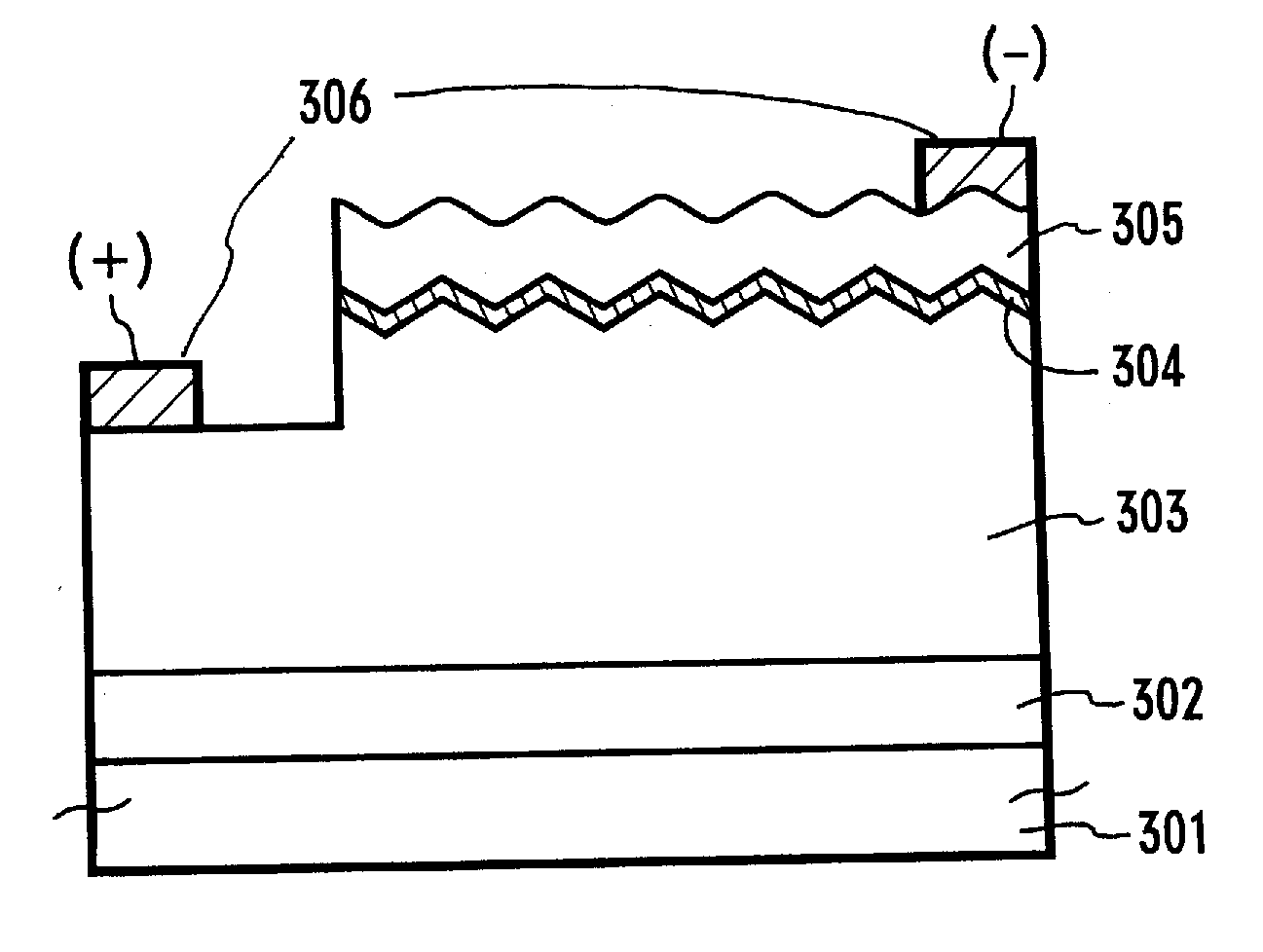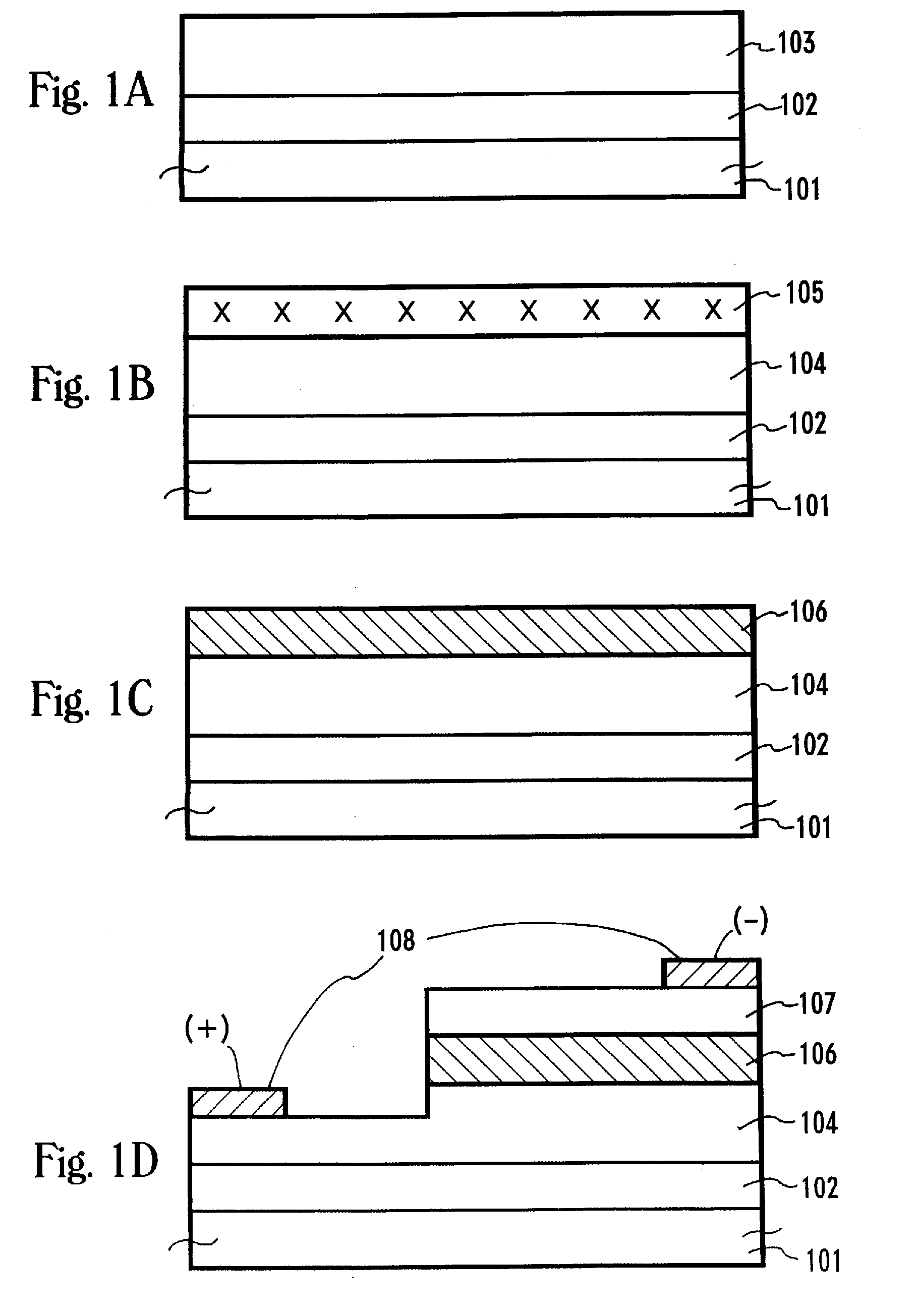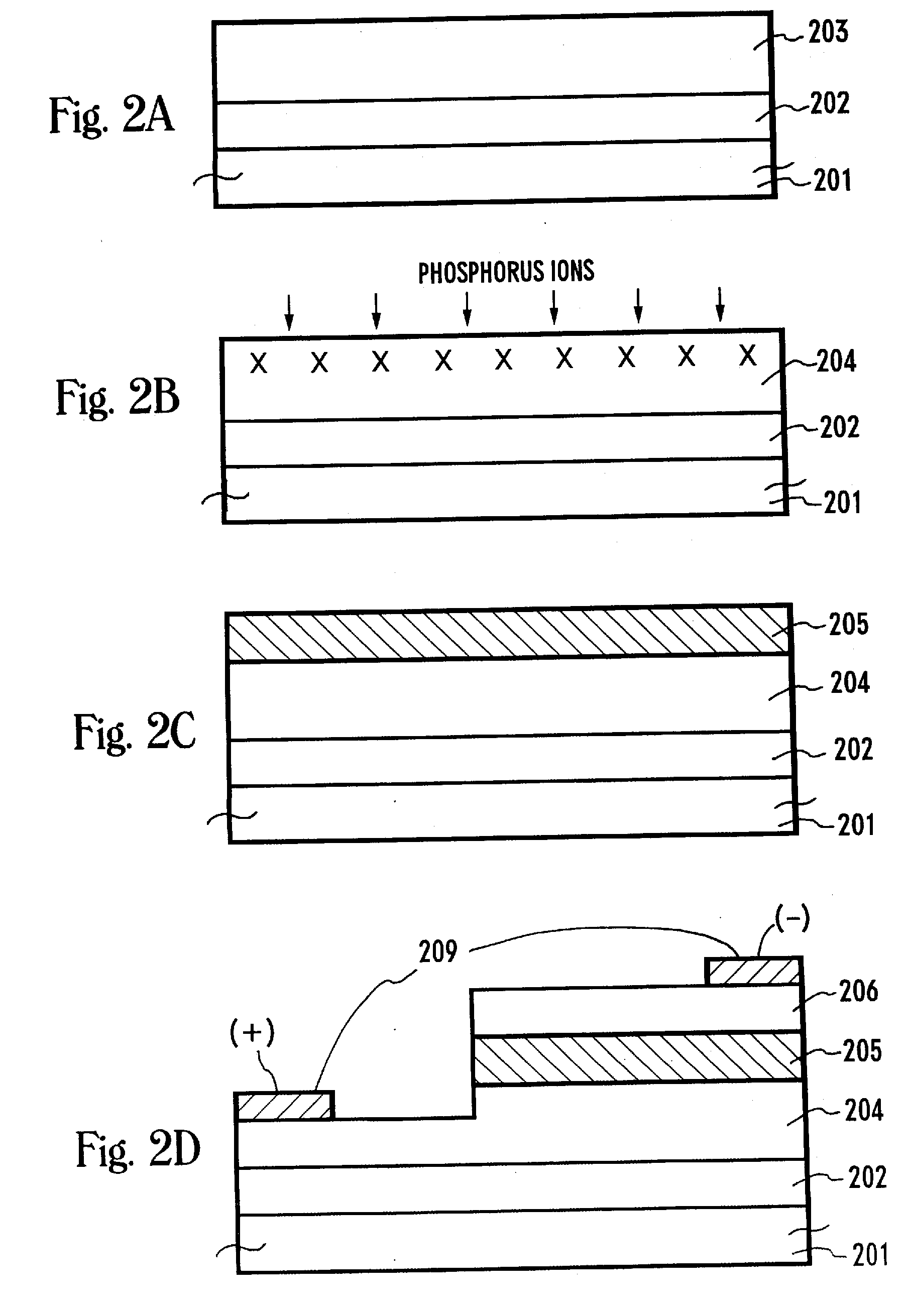Thin-film photoelectric conversion device and a method of manufacturing the same
a technology of conversion device and thin film, which is applied in the direction of sustainable manufacturing/processing, semiconductor devices, climate sustainability, etc., can solve the problems of limited use, low conversion efficiency, limited usable materials, etc., and achieve excellent characteristics of thin film solar cells and the increase of the life of carriers in the crystalline silicon film
- Summary
- Abstract
- Description
- Claims
- Application Information
AI Technical Summary
Benefits of technology
Problems solved by technology
Method used
Image
Examples
first embodiment
[0032] The first embodiment shows a process of manufacturing a thin-film solar cell through a method of forming an amorphous silicon film in close contact with a metal element that accelerates the crystallization of silicon, crystallizing said amorphous silicon film through a heat treatment, and removing said metal element remaining in the amorphous silicon film after the crystallization.
[0033] This embodiment will be described with reference to FIGS. 1A to 1D. In this embodiment, nickel is used as a metal element having a catalyst action that accelerates the crystallization of silicon. First, a silicon oxide film 102 having a thickness of 0.3 μm is formed on a glass substrate (for example, Corning 7059 glass substrate) 101 as an underlying layer. The silicon oxide film 102 is formed through a plasma CVD technique using tetra ethoxy silane (TEOS as a raw material), and also can be formed through a sputtering technique as another method. Subsequently, an amorphous silicon film 103 i...
second embodiment
[0040] In a second embodiment, there is described a thin-film solar cell which is formed in a process where a metal element that accelerates the crystallization of crystalline silicon is removed after crystallization, through a method where phosphorus is implanted into the surface of the crystalline silicon film via a plasma doping method.
[0041] The second embodiment will be described with reference to FIGS. 2A to 2D. Nickel is used in this embodiment as a metal element functioning as a catalyst to accelerate the crystallization to accellerate the crystallization of silicon. First, a silicon oxide film 202 having a thickness of 0.3 μm is formed on a glass substrate (for example, Corning 7059 glass substrate) 201 as an underlying layer. The silicon oxide film 202 is formed by plasma CVD with tetra ethoxy silane (TEOS as a raw material), and also can be formed through a sputtering technique as another method. Subsequently, an amorphous silicon film 203 is formed with silane gas as a ...
third embodiment
[0049] A third embodiment shows an example where in the process of manufacturing the thin-film solar cell described with reference to the first and second embodiments, the surface of the crystalline silicon film is subjected to an anisotropic etching process so as to make the surface of the solar cell irregular as shown in FIG. 3. A technique by which that surface is made irregular so that reflection from the surface of the solar cell is reduced is called a “texture technique”.
[0050] A silicon oxide film 302 having a thickness of 0.3 μm is formed on a glass substrate (for example, Corning 7059 glass substrate) 301 as an underlying layer. The silicon oxide film 302 is formed by plasma CVD with tetra ethoxy silane (TEOS as a raw material), and also can be formed by sputtering as another method. Subsequently, an amorphous silicon film is formed by plasma CVD. The formation of the amorphous silicon film may be conducted by low pressure thermal CVD, sputtering, evaporation, or the like....
PUM
| Property | Measurement | Unit |
|---|---|---|
| melting point | aaaaa | aaaaa |
| temperature | aaaaa | aaaaa |
| strain point | aaaaa | aaaaa |
Abstract
Description
Claims
Application Information
 Login to View More
Login to View More - R&D
- Intellectual Property
- Life Sciences
- Materials
- Tech Scout
- Unparalleled Data Quality
- Higher Quality Content
- 60% Fewer Hallucinations
Browse by: Latest US Patents, China's latest patents, Technical Efficacy Thesaurus, Application Domain, Technology Topic, Popular Technical Reports.
© 2025 PatSnap. All rights reserved.Legal|Privacy policy|Modern Slavery Act Transparency Statement|Sitemap|About US| Contact US: help@patsnap.com



